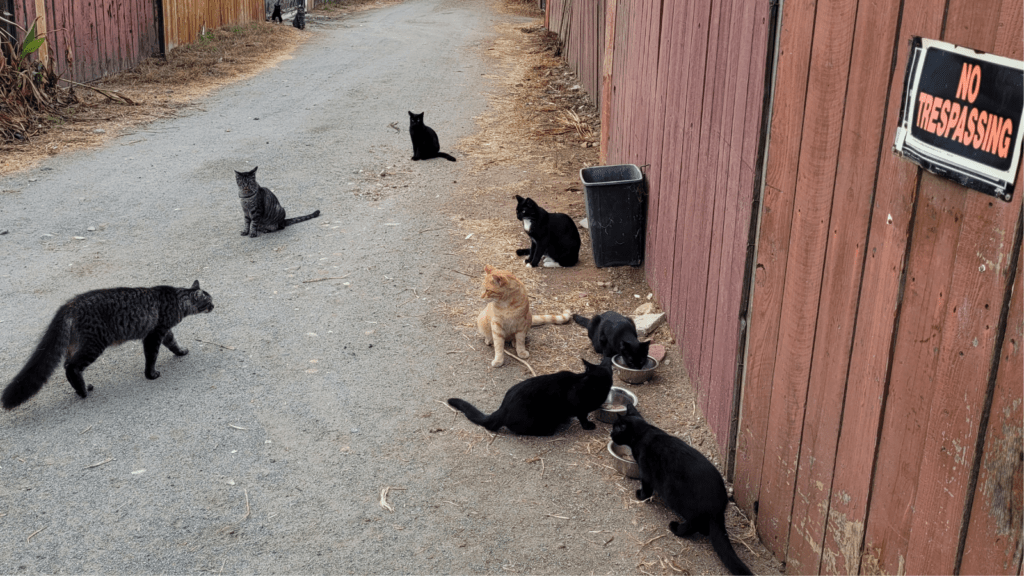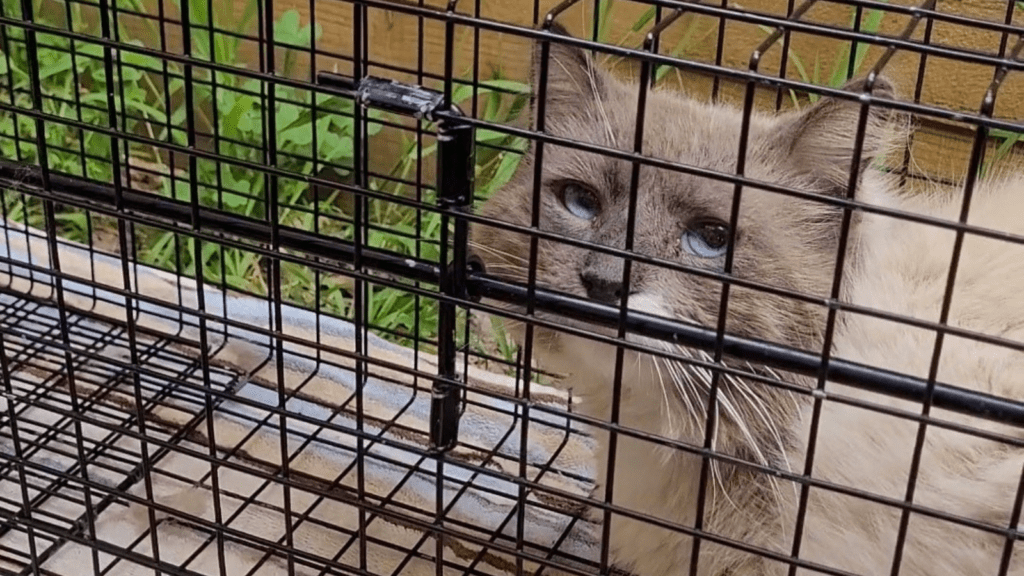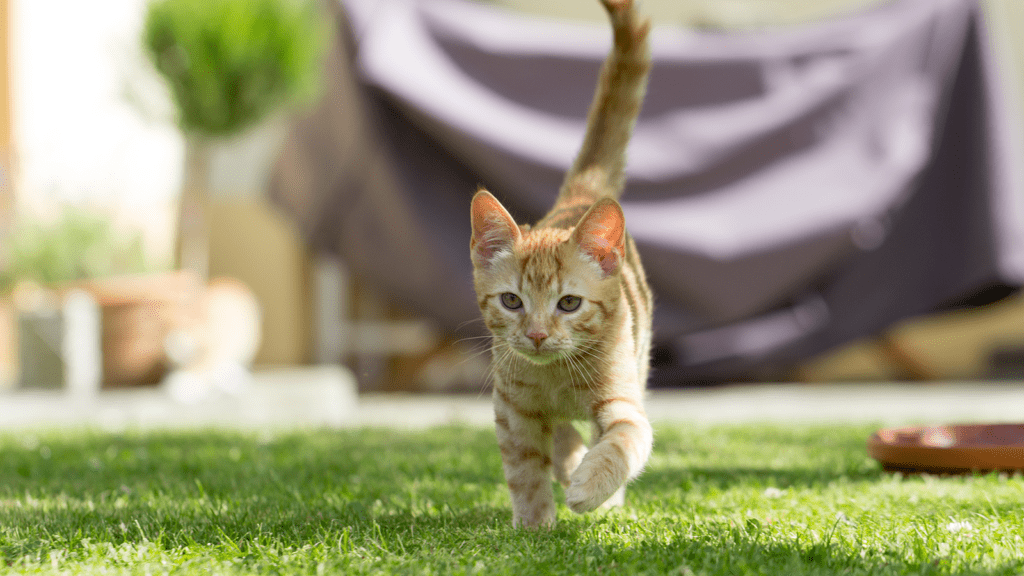
TNR Certification Program
Are you considering a TNR certification? On August 7, 2022, I attended the Community Cats Podcast and Neighborhood Cats TNR Certification Program, and here are a few things you’ll learn.
First, it was a great presentation and training program! It was 2.5 hours on a Caturday with one scheduled break. It was easy to follow, the pace moved along nicely, and it was loaded with actionable tips and pointers for helping feral and stray cats. I also felt that by the end of the program and TNR training, I was well-equipped to start rescuing cats.
Who Should Take A TNR Certification Program?
Trap, neuter, return (TNR) certification is for anyone interested in learning about or getting better at rescuing cats, caring for community cats, and colony management. A TNR certification workshop can be beneficial for beginners and experienced trappers.
There were a few initial survey questions and an interactive format that helped us understand who else was in the audience. 57% of the participants had never trapped a cat before, while the other half of the participants were active trappers and TNR activists.
- 57% New trappers, 0 traps
- 23% 1-10 cats trapped
- 16% 11-50 cats trapped
- 4% 50+ cats trapped
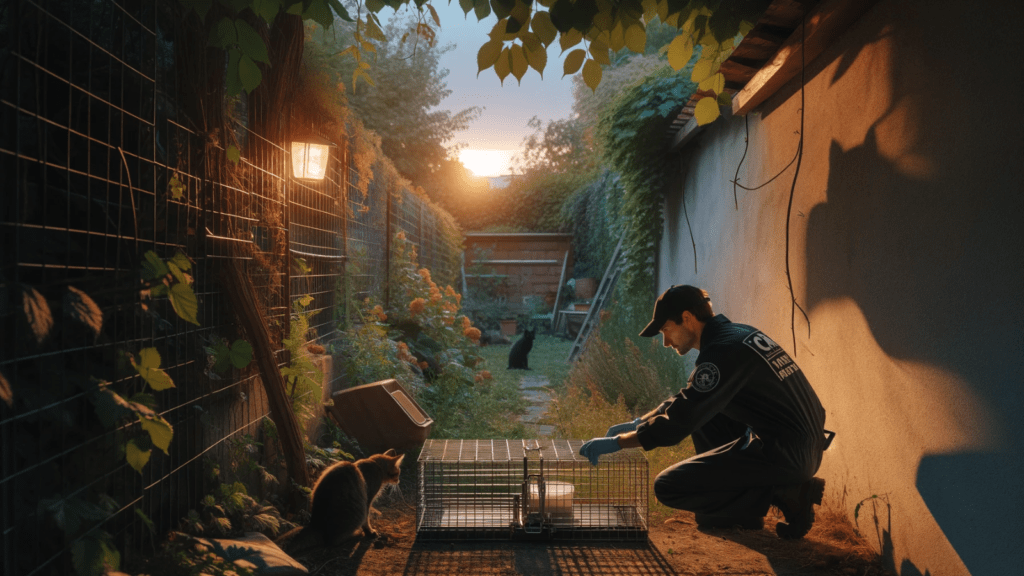
What Do You Learn In A TNR Certification Program?
The program began by defining what Colony Cats are, What TNR is, What the benefits of TNR are, and what the alternatives to TNR are for managing feral cats.
Colony cats definition: Colony cats share the same food supply and territory. There are all levels of socialization in entire colonies, but these cats are not traditional pets.
What Is TNR?
The goal is to TNR the entire colony of cats. In this section, you’ll get an overview and see video footage of actual projects for the following topics.
- Spay, Neuter, Vaccinate, and ear Tip
- Return the cats to the original territory
- Ongoing care and monitoring
- Options – the adoption of friendlies or kittens
Benefits Of TNR
You might need to explain what you’re doing to the neighbors, so it’s important to know about some of the benefits of TNR.
- No more kittens and fewer outdoor neighborhood cats over time
- Reduces nuisance behavior of outdoor cats, odor from spraying, noise from mating and fighting, or visibility from roaming (once cats are fixed, they travel openly less)
- Reduces the spread of rabies transmission
- Helps make healthier cats
- Rodent control – Cats deter rodents through the cat’s scent, not from hunting.
Failed Alternatives To TNR
We’ve tried a lot of failed alternatives to TNR as a way to manage and care for community cats. Here are a few things that don’t work.
- If you remove the cats:
- Cats from other colonies will enter the territory – a vacuum effect
- Neighborhood cats are there for a reason: food, shelter, and cat-friendly habitat
- Removing cats without altering the environment will still attract cats
- The new cats aren’t fixed because they travel further, and a new colony is then established.
- Cats not trapped will keep reproducing
- New and lost abandoned cats arrive
- There aren’t enough people and resources to safely and humanely remove all the cats
How To TNR
The TNR certification program went into great detail about how to conduct TNR, from trapping a single cat to catching an entire colony. Workshop attendees received extensive handouts about local and national animal care from the workshop’s executive director.

Step 1: Community Relations
- Identify feral and stray cats and any current colony feeders
- Find help if needed. Two trappers are better than one
- Communicate what you’re doing to neighbors
- Gain permission from owners if you’re trapping on their property
- Be aware of any issues or challenges in the area or with the cats
How To Communicate With The Community
- Walk and talk to people on the ground level
- Meetings – HOA, Community Board, Nextdoor, Facebook, local humane society
- Flyers and door hangers
How To Deter Cats From Certain Areas
- Ultrasonic devices – sometimes, the placement and setup are hard because you can’t see sound.
- Motion-activated sprinklers. Motion scares cats, but the goal isn’t to get them wet. Works in warmer weather, but is not good in winter.
- Cat-proofing fencing
Over time, the cats will learn and be trained not to come into the yard.
Step 2: Establish A Feeding Pattern
- Consistent time every day
- Train with sound – keys, shake food, whistle, clicker
- Don’t leave food out 24/7
- Count the cats, note kittens, injured or sick, and friendlies
Step 3: Make Preparations For Trap Day
- Schedule spay and neuter appointments
- Prepare your traps and dividers, you can borrow these from local TNR groups
- Prepare transportation
- Prepare a holding space
- Warm, dry, secure – cats under anesthesia need to be warm as their body temperature drops.
- Start trapping 2 days before your appointment. Don’t wait until the last minute
- Cats will remain in the traps which are now cages
- Fleas are usually not an issue but you can use Capstar. Cover the traps with towels to prevent them from jumping, but the fleas already have a host.
- Clean the space after and you should be fine.
- Prepare a post-operation space
Step 4: Trapping Feral and Stray Cats
Here are some steps and tips the TNR certification program covers.
- Start 2-3 days before your spay appointment
- Continue trapping while other cats are trapped until you get them all
- Use good trapping bait
- Use good trap placement
- Find the hot spot where the cats like it
- Don’t leave the trap on an island. Place it next to something or camouflage the trap
- Replace the trap in the hot spot if that’s where cats like it
- Cover the trap, sometimes before, mostly afterward. Cats calm down after 30 seconds or so once covered. Keep the sides covered but you can open the front and back for air.
- Never leave traps unattended. Cats are vulnerable, and you’re responsible. Be in the area and watch for people. Check traps periodically.
- Don’t stare or look at the cat. They are sensitive and will see you see them.
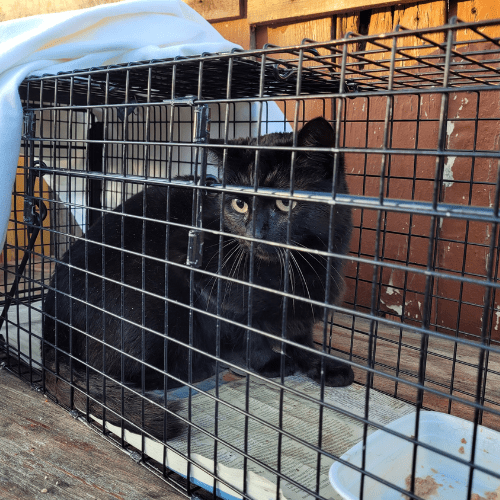
Step 5: Recovery Period
The recovery period for post-operation spaying and neutering.
- With a skilled surgeon, spay or neuter recovery is 24-48 hours.
- Look for excess bleeding, lethargic behavior
- Check the ear tip for bleeding
Step 6: Return The Cats
Release and return the cats back to their outdoor home.
- Same location!
- Give them a minute to recognize their space
- Delay due to bad weather if needed
- Some may disappear for a few days, but they will come back
Step 7: Monitoring Colony Cats
Managing and colony care is crucial in maintaining healthy and happy cats.
- Best quality food you can afford
- Mix wet and dry
- Always provide water
- Use feeding stations if possible
- Discrete location
- Large openings
- All-weather bin style
- Winter feeding
- Cats need more calories
- Prevent water from freezing
- You may need to use more dry food
- Waterproof shelter
- Create a winter shelter
- Good insulation
- Minimal air space, based on the number of cats
- Cat’s bodies act as radiators
- Use straw, not hay
- Cats want to burrow into the insulation
- Don’t use a blanket or newspaper, which actually draws body heat out
- Replace wet materials ASAP
- Line the walls with Mylar blankets if extreme temps
Here are four affordable wet foods for feeding feral cats:
- 4 health All Life stages dry
- Kirkland sig maintenance cat and chicken
- Rachel Ray dry
- Diamond Naturals Active
Thanks for considering the Community Cats Podcast and Neighborhood Cats TNR Project and Workshop. We hope you join our ongoing Facebook group with our national programs director and follow other TNR activists to gain access to an incredible network of information and support.
Best Cat Traps
As an Amazon Associate, I earn from qualifying purchases at no cost to you.
Tomahawk Cat Trap and Divider
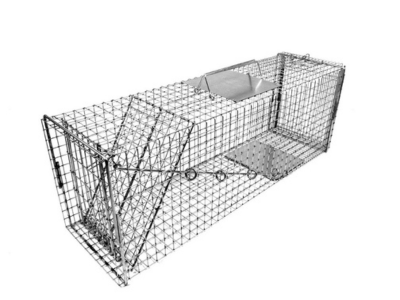
Neighborhood Cats 36″ Cat Trap with Easy Release Rear Access Door
- Rear sliding door for easy transfers
- It weighs 11 lbs
- Measures 36L x 10W x 12H
- Constructed from 1 x 1″ – 14 gauge galvanized wire mesh
- Worked closely with the Neighborhood Cats Organization to create the perfect feral cat trap
- Extra large trip plate and carrying handles
- Model 608NC is specifically designed for catching feral cats
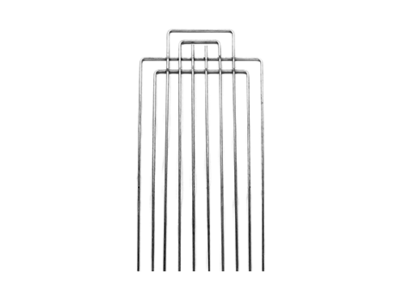
Tomahawk Live Trap Model TD10 – Trap Divider for 10″ Wide and Smaller Traps and Cages
- 6 – Gauge, galvanized steel.
- Trap dividers allow you to confine animals to one section of the trap or cage.
- Easily section off the trap door for easy release.
- Helpful in transferring cats during care.
- 9″ Wide, 18″ Tall
- Made in U.S.A.
Tru Catch Cat Trap and Divider
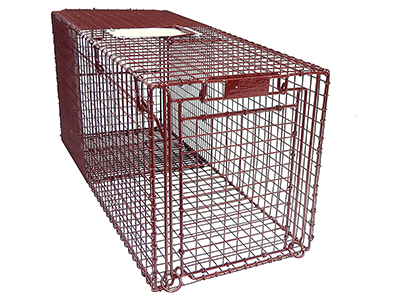
Tru Catch Cat Trap – 30FCD Fat Cat Humane Live Animal Trap
- Works on cats, small dogs, skunks, rabbits, and other small animals.
- Powder Coated steel frame for long lasting finish.
- 5 year guarantee against animal damage.
- Humane and Safe Operation, No Springs or Hinges.
- 30″ Long, 14″ Tall, 12″ Wide
- Made in U.S.A.


